Editorial: What Colors Are Your Thoughts?

The March editorial "All Blessings Flow" described some Biblical elements of the concept of blessing, including the fact that in early times, blessing and cursing were believed to be capacities of certain very powerful persons, who might be assiduously courted, manipulated, even tricked into uttering the words that would bring wished-for things--prosperity, victory, perhaps ruling power--to those blessed, and disaster to those cursed. Blessing also came to be linked to obedience to God, its ultimate source, and to have an important spiritual dimension of closeness to God. Still later, blessing tended to be democratized; Biblical writers urged all persons to bless those with whom they deal, foes as well as friends, and to refrain from cursing.
This democratization is potentially a wonderful thing, but blessing one's opponents is, needless to say, difficult and rarely done. Perhaps partly for this reason the concept has become flattened, close to meaningless. Almost everyone would rather hear "Bless you" than "Damn you," but the words mean little more than smile or scowl, and have little lasting impact.
Or so it seems. However, there is considerable evidence, though not widely known, of phenomena that look much like blessings or curses at work, either in a minor or a major way. They strongly suggest that our life-energies are not limited to our bodies' confines and our usual ways of interacting with the world. Some readers may find that such accounts are not only interesting but are helpful in encouraging them to discipline their own thoughts and feelings in the direction of love.
Children Who See Colors
One example suggesting blessing or cursing at work is the phenomena of aura vision. A small minority of persons, principally young children, from time to time see colored light emanating from other persons that may tell 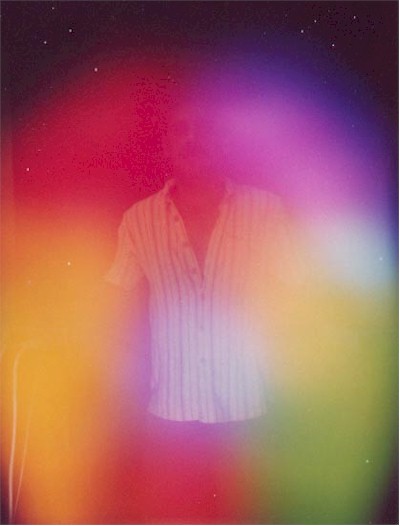 them something of the others' frame of mind. Consciousness researcher and educator James W. Peterson, in his book The Secret Life of Kids, tells of having encountered this phenomenon during his college years when he was employed as a summer camp counselor. One day when he was sitting in meditation during his free hour, two boys named Drew and Eric, eight and nine, came running in. Not wanting to lose any of his precious meditation time, Peterson kept his eyes closed and tried to continue. The boys slowed and one began to whisper: "Do you see what I see?" The other replied "Yeah, it's weird." They began to describe to each other what they saw: swatches of color, constantly changing in shade, floating around different areas of Peterson's body. Later, Peterson recorded Drew's account of what he saw in more detail. Neither of the children had told an adult about their perceptions before, apparently sensing that such talk would not be welcome.
them something of the others' frame of mind. Consciousness researcher and educator James W. Peterson, in his book The Secret Life of Kids, tells of having encountered this phenomenon during his college years when he was employed as a summer camp counselor. One day when he was sitting in meditation during his free hour, two boys named Drew and Eric, eight and nine, came running in. Not wanting to lose any of his precious meditation time, Peterson kept his eyes closed and tried to continue. The boys slowed and one began to whisper: "Do you see what I see?" The other replied "Yeah, it's weird." They began to describe to each other what they saw: swatches of color, constantly changing in shade, floating around different areas of Peterson's body. Later, Peterson recorded Drew's account of what he saw in more detail. Neither of the children had told an adult about their perceptions before, apparently sensing that such talk would not be welcome.
Peterson went on to become an elementary school teacher, and was able to continue research on this gift in children, learning how to interview them casually, one-on-one, and avoid leading questions. As a result of his guarded support, those who had encountered resistance or rebuke when they told their parents what they saw, began to improve in schoolwork and in social relations.
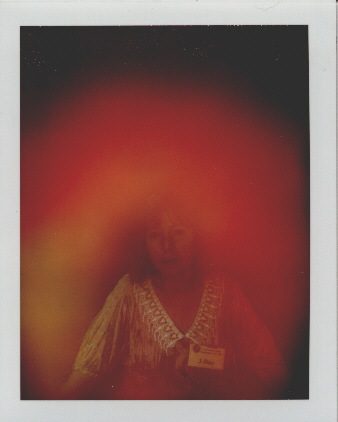 In fifteen years of research, Peterson determined that about seven per cent of children see such colored light around humans, and sometimes around animals and plants as well. Most children saw the colors only occasionally, e.g., around a person in emotionally charged states; a few saw them all the time. Overall, what they saw fit into definite patterns. Beautiful, clear colors generally went with good feelings. Black, gray, or similar muddy shades indicated negative feelings--depression, fear, despair; red tended to mean anger, though it could sometimes be positive. When Peterson was upset trying to cope with classroom disorder, eight-year-old Quinton liked to pipe up and tell him that he had red and gray colors coming out of his head, or nasty lightning bolts around his eyes. (Since Peterson was trying to cultivate spiritual qualities in life, Quinton's candor was not appreciated.) In contrast, when a singer led the class in a song about love and joy , two or three children individually later reported shimmering yellow-green light around or flowing upward out of his head. However, the children do not interpret all the colors they see, which in any case are always moving and changing.
In fifteen years of research, Peterson determined that about seven per cent of children see such colored light around humans, and sometimes around animals and plants as well. Most children saw the colors only occasionally, e.g., around a person in emotionally charged states; a few saw them all the time. Overall, what they saw fit into definite patterns. Beautiful, clear colors generally went with good feelings. Black, gray, or similar muddy shades indicated negative feelings--depression, fear, despair; red tended to mean anger, though it could sometimes be positive. When Peterson was upset trying to cope with classroom disorder, eight-year-old Quinton liked to pipe up and tell him that he had red and gray colors coming out of his head, or nasty lightning bolts around his eyes. (Since Peterson was trying to cultivate spiritual qualities in life, Quinton's candor was not appreciated.) In contrast, when a singer led the class in a song about love and joy , two or three children individually later reported shimmering yellow-green light around or flowing upward out of his head. However, the children do not interpret all the colors they see, which in any case are always moving and changing.
Animals are occasionally mentioned as emitting colored light just as humans do. Clairvoyant Charles W. Leadbeater (1854-1934) reported seeing a pleasant rose cloud emanating from a purring cat. Seven-year-old Stacy said that when dogs barked, she saw red torpedo-like things coming from their mouths. In view of the grimy colors usually seen as expressing fear, depression, and anger, one can only imagine the huge muddy clouds that must surround factory farms, not to mention slaughterhouses, harming all parties involved. In a booklet about vegetarianism, Leadbeater cites a social worker who found that the children who lived near the stockyards and slaughterhouses of Chicago (then the animal-killing hub of the country) seemed unable to play any games that didn't involve violence.
Thoughts as Things
Sometimes the phenomena persist, separated from the originating person. For example, during a field trip to a police station, Stacy stepped with the other children into a holding cell, but quickly ran out again. She told Peterson she saw many black or red lightning-bolt-like things floating around in the room, bad things which she didn't want near her. She tried to depict them with a pencil sketch of many ragged, dark-radiating shapes. Peterson thought it likely that the phenomena were the residue of feelings of fear and anger in prisoners confined there. They look very much like the lingering images of inarticulate curses.
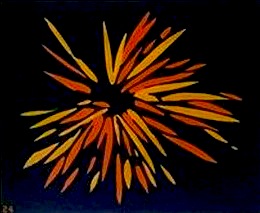 Leadbeater described such separated shapes in considerable detail in a book entitled Thought-Forms, co-written with Annie Wood Besant (a Pioneer featured in PT9 ). He would see them forming in a person's aura, then separating and moving outward. For example, a strong thought of love, peace, and protection, sent out by a caring person who had "earned the right to bless," took a beautiful golden and pink winged shape that went forth to its beloved object, over whom it would probably have a beneficial effect. On the other side, Leadbeater also described forms similar to what Stacy saw. The figure reproduced here is an artist's depiction of what Leadbeater saw when someone suddenly exploded with irritation. More frighteningly, in a slum area of London he saw a muddy gray-brown cloud out of which erupted a dirty-red lightning bolt, the whole shooting out of a partly intoxicated man toward a woman just before he struck her down. Morihei Ueshiba, the founder of aikido, during the Japanese assault on China in 1931 similarly saw a stream of ki/light coming from a gun just before someone fired at him. This perception actually enabled him to dodge the bullets.
Leadbeater described such separated shapes in considerable detail in a book entitled Thought-Forms, co-written with Annie Wood Besant (a Pioneer featured in PT9 ). He would see them forming in a person's aura, then separating and moving outward. For example, a strong thought of love, peace, and protection, sent out by a caring person who had "earned the right to bless," took a beautiful golden and pink winged shape that went forth to its beloved object, over whom it would probably have a beneficial effect. On the other side, Leadbeater also described forms similar to what Stacy saw. The figure reproduced here is an artist's depiction of what Leadbeater saw when someone suddenly exploded with irritation. More frighteningly, in a slum area of London he saw a muddy gray-brown cloud out of which erupted a dirty-red lightning bolt, the whole shooting out of a partly intoxicated man toward a woman just before he struck her down. Morihei Ueshiba, the founder of aikido, during the Japanese assault on China in 1931 similarly saw a stream of ki/light coming from a gun just before someone fired at him. This perception actually enabled him to dodge the bullets.
Many of the shapes Leadbeater saw were not specifically directed toward another person, but tended to hover around their creator for awhile, and, when he or she was relaxed and unpreoccupied, might re-enter his aura. He saw this as a reinforcement process where by our thoughts and feelings tend to become habitual, either for good or ill. The shapes might also enter the auras of other persons of similar mindsets, and strengthen their feeling patterns. For example, feelings of devotion to Jesus would reinforce devotional feelings in other religious persons, though the object of the other's devotion might be Mary or Krishna. The converse, unfortunately, is also true; feelings of resentment or hostility reinforces hostility in others already inclined in that direction. But if a person has systematically cultivated love and peace, the curses will not influence him or her, but will tend to bounce back.
Patterns and Variations
 What different visionaries see is not always consistent. Leadbeater and his colleague Besant (who was also somewhat clairvoyant) apparently saw auras completely surrounding persons, and would see the same colors in a given person's aura. Peterson's child visionaries also sometimes saw the same colors at the same time. There is no doubt that certain patterns do recur among visionaries independently of one another--rose tends to mean affection, muddy colors negative feelings--but there is also unconscious creativity involved in what different visionaries see. For example, one of Peterson's children, seven-year-old Jessie, saw colored light only from parts of a person's body: white light from their fingers, and colored light from their heads. There are also differences regarding which color represents a given feeling. For example, Leadbeater perceived the devotional feelings of many people joined in a worship service as a mass of blue light, whereas for another clairvoyant the typical color emitted by people in worship might be golden or white. Overall, however, there is little doubt that such perceptions are not psychotic aberrations any more than were George Fox's vision of an ocean of love and light that flowed over an ocean of darkness and death. What these gifted persons see evidently has a basis in reality.
What different visionaries see is not always consistent. Leadbeater and his colleague Besant (who was also somewhat clairvoyant) apparently saw auras completely surrounding persons, and would see the same colors in a given person's aura. Peterson's child visionaries also sometimes saw the same colors at the same time. There is no doubt that certain patterns do recur among visionaries independently of one another--rose tends to mean affection, muddy colors negative feelings--but there is also unconscious creativity involved in what different visionaries see. For example, one of Peterson's children, seven-year-old Jessie, saw colored light only from parts of a person's body: white light from their fingers, and colored light from their heads. There are also differences regarding which color represents a given feeling. For example, Leadbeater perceived the devotional feelings of many people joined in a worship service as a mass of blue light, whereas for another clairvoyant the typical color emitted by people in worship might be golden or white. Overall, however, there is little doubt that such perceptions are not psychotic aberrations any more than were George Fox's vision of an ocean of love and light that flowed over an ocean of darkness and death. What these gifted persons see evidently has a basis in reality.
To See Oursels as Ithers See Us
For some readers, the foregoing sketch of aura- and thought-form-vision may seem merely bizarre and irrelevant. Others, however, may find these concepts both significant and useful in the challenging process of becoming the change we seek. Sometimes it seems that changing ourselves into persons who are strong enough to bless friends and foes alike is almost as difficult as changing our violent world into a loving place. In most of our situations in life, especially challenging ones, whether our thoughts and feelings are helpful, harmful, or a mix of the two, we are usually caught up in our focus on the things that triggered them. But suppose we form the habit of stepping aside from ourselves for a moment, and imagining a little Quinton informing us that we've got dirty-red lightning bolts, or a thick murky cloud, coming out of our bodies. Not a picture to flatter! The ocean of darkness and death is quite heavy enough without our contributing to it.
Seeing ourselves as these visionaries might see us can strengthen our motivation to curb thoughts of a cursing type. Such a motivation is an indispensable step in "becoming the change," but we cannot transform ourselves by gritting our teeth. Some other potentially helpful principles will be offered in the May issue.
--Gracia Fay Ellwood
Unset Gems
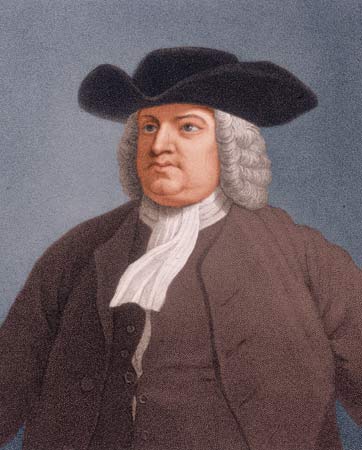
"It is a cruel Folly to offer up to Ostentation so many Lives of Creatures, as make up the State of our Treats . . . . Neither urge another to that thou wouldst be unwilling to do thy self . . . ."
--William Penn
"All creatures of God form the family of God, and he is the best loved of God who loves best His creatures."
~ The Qur’an. Contributed by Marian Hussenbux
"Cornbread and butter beans and you across the table,
Eatin' beans and makin' love as long as I am able. . . ."
--Traditional American folk song, contributed by Fay Elanor Ellwood
Note: The expression "making love" originally meant courting talk, and could still be used that way as recently as the musical Brigadoon in 1947.
News Notes
Quaker Saves Choking Toddler
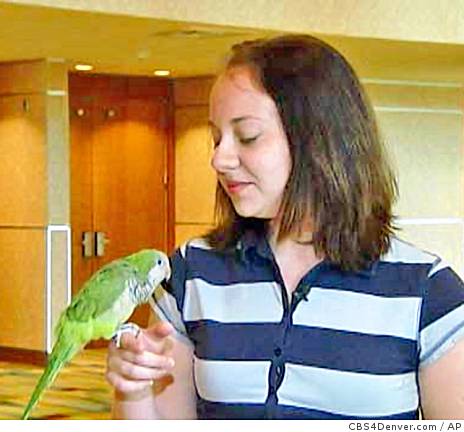 A Quaker parrot named Willie, residing in the home of guardian Megan Howard in Denver, Colorado, has been named a hero and awarded the Animal Lifesaver Award by the local Red Cross chapter. Megan was babysitting little Hanna Kuusk, to whom she had given breakfast, then stepped out of the room.
A Quaker parrot named Willie, residing in the home of guardian Megan Howard in Denver, Colorado, has been named a hero and awarded the Animal Lifesaver Award by the local Red Cross chapter. Megan was babysitting little Hanna Kuusk, to whom she had given breakfast, then stepped out of the room.
Before long she heard Willie flapping his wings and screaming "Mama, baby!" repeatedly--obviously not "parroting" pre-learned phrases! Megan ran in to find that Hanna had choked and was already turning blue. Megan gave the child the Heimlich maneuver, which pulled her back, but did not hesitate to give full credit to Willie.
(For more about feathered Quakers, see "Save the Quakers!" PT 41.) Photo: Megan and her feathered Friend
--Contributed by Robert Ellwood and Benjamin Urrutia
MTV Shows Veg Ads
MTV viewers were exposed to the cruel reality behind factory farming when the group Compassion Over Killing (COK) ran ads nationwide for five straight weeks, offering viewers a 30-second behind-the-scenes tour inside the world of factory farming, and encouraging them to think about exactly what they’re eating. The ads directed them to TryVeg.com for more information. To read the announcement article, see www.ecorazzi.com/2009/02/23/mtv-gets-veganized-with-new-compassion-over-killing-ads
--Contributed by Lorena Mucke
Animal Protection Caucus Formed in Congress
 A bipartisan caucus has been created to raise awareness about animals and press for legislation to protect them. It will be co-chaired by Republican Elton Gallegly from southern California (recipient of a Lifetime Award from the HSUS), and Democrat Jim Moran of Virginia, both of whom have a history of work on animal welfare issues. In the past they pushed through laws such as those forbidding the dreadful "animal crush" videos (a form of pornography) of the 1990s, and the interstate transport of dogs and cocks for fighting. The group will work on such issues as ending horse-slaughter plants, export of horses for slaughter, and puppy mills. Photo of Elton Gallegly
A bipartisan caucus has been created to raise awareness about animals and press for legislation to protect them. It will be co-chaired by Republican Elton Gallegly from southern California (recipient of a Lifetime Award from the HSUS), and Democrat Jim Moran of Virginia, both of whom have a history of work on animal welfare issues. In the past they pushed through laws such as those forbidding the dreadful "animal crush" videos (a form of pornography) of the 1990s, and the interstate transport of dogs and cocks for fighting. The group will work on such issues as ending horse-slaughter plants, export of horses for slaughter, and puppy mills. Photo of Elton Gallegly
HBO Special Documents Cruelty to Pigs
An HBO special on animal cruelty in factory farming titled Death on a Factory Farm, which premiered on March 16 and aired twenty times, documented animal cruelty in an Ohio factory farm as recorded by undercover video. The owners of the Ohio farm were charged with animal cruelty. The film also showed footage of the trial, where representatives of the pork industry gave testimony detailing acceptable hog "care" practices. To read the full article see ca.reuters.com/article/entertainmentNews/ idCATRE 5254TL20090306?pageNumber=1&virtualBrandChannel=0
--Contributed by Lorena Mucke
Letters
Dear Peaceable Friends,
Temple Grandin gave up too soon on a vegan diet. The discomfort she was feeling may have been the result of her body and mind being healed from Asperger's Syndrome/autism.
-- Benjamin Urrutia
Dear Peaceable Friends,
I enjoyed the March PT. I somehow hadn't realized that the blessing " . . . may God make his face to shine upon you . . ." is from the Hebrew Bible; I guess I haven't spent enough time in the book of Numbers . . . . I appreciated very much your message about ki and also enjoyed Ben's pilgrimage. I especially loved that precious video of the kitten and the deer, which I shared with some of my friends.
--Fay Elanor Ellwood
Dear Peaceable Friends,
The aikido approach for non-aggression evidently is a glimpse at the very ways of the Wheel of Life. Thank you for sharing that, and thanks to the Peaceable Table, and all the Angels. . . for working to bring Peace . . . .
Namaste . . . Blessings . . . Agape
--Michele Louise Mitchell
Glimpses of the Peaceable Kingdom
Cat Loves Mouse
Here's a remarkable film clip of a Thai cat named Huan who adopted a baby mouse named Jerry: video.yahoo.com/watch/4534337/12146735
--Contributed by Fay Elanor Ellwood
Rat Loves Cat
And here's an equally remarkable rat who resolutely insisted on being adopted by a cat:
video.search.yahoo.com/video/play?p=cat+loves+mouse&n =21&ei=utf-8&js=1&fr=yfp-t-501&tnr=20&vid=0001151192160
--Contributed by Fay Elanor Ellwood
Children's Book and Film Review-Essay: Coraline
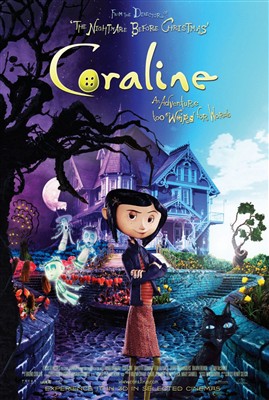 Gaiman, Neil. Coraline. Illustrations by Dave McKean. New York: HarperCollins, 2002. 162 pages paperback. $12.99.
Gaiman, Neil. Coraline. Illustrations by Dave McKean. New York: HarperCollins, 2002. 162 pages paperback. $12.99.
Coraline. A stop-motion 3-D animated film by LAIKA. Produced by Claire Jennings; written and directed by Henry Selick. Starring Dakota Fanning as the voice of Coraline. 2009. Rated PG.
Coraline, both the film and the novella upon which it is based, much more to say than most literature and drama for children, including significant animal and animal-based food themes.
The film presents a brilliant and disturbing opening scene not in the book: spiderlike, needle-jointed fingers manipulate a rag doll, tearing off its eyes and hair, gutting it, refilling it with some kind of powder, and putting on it new eyes and hair and clothes. We will soon see that the doll now closely resembles the story's heroine, Coraline, with one exception: its eyes are black buttons.
Young Coraline and her parents have just moved into a rather run-down country mansion divided into apartments. In the book it is located near London; in the movie, near Ashland, Oregon (calling up the city's tradition of an annual Shakespeare festival). Bored and restless, Coraline misses her old friends and feels neglected by her parents, who care about her but are absorbed in their computers. In the film (not the book) she meets an odd neighborhood boy named Wybie (short for Wybourn) Lovat, whose grandmother owns the building, but refuses to let him enter it because of some mysterious danger. Wybie's attempts to scare Coraline with childish antics are off-putting; he gives her the mysterious rag doll, which he has found, unintentionally putting her in danger. However, his basic kindness is evident in the way he relates to a homeless Black Cat, whom he befriends, feeds and strokes, but does not claim to own. Later, Wybie is also significantly helpful to Coraline in her efforts to unravel the mystery of the house.
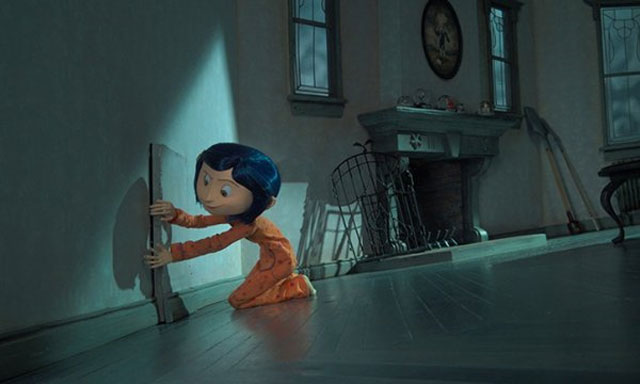 A Jumping Mouse leads Coraline--like Alice through the Rabbit Hole or Lucy through the wardrobe--to a door which the previous day led only to a bricked-off part of the house. Now, however, it opens into a tunnel leading to a strange and dangerous world which mimics her own. Here Coraline meets the Other Mother, who almost exactly resembles her own parent. This being has buttons for eyes, like the rag doll, but seems otherwise to be somebody fun to know. She gives the girl the smiles and attention she cannot get from her real parents, who are too busy writing a gardening catalog (thought they don't do any actual gardening). She provides entertaining and tasty meals, about which more later. Her version of the house is new-looking and brightly painted, has a magical garden of live flowers, and theatrical neighbors (resembling those in the real world, but button-eyed) in adjoining apartments who provide entertaining shows. After a couple of nights of this, Coraline feels she is ready to stay in such a wonderland. But there is a catch: She must allow her eyes to be covered (or replaced) by buttons. Presented with this requirement, the honest Coraline wants only to escape; but it becomes clear that escape will not be easy.
A Jumping Mouse leads Coraline--like Alice through the Rabbit Hole or Lucy through the wardrobe--to a door which the previous day led only to a bricked-off part of the house. Now, however, it opens into a tunnel leading to a strange and dangerous world which mimics her own. Here Coraline meets the Other Mother, who almost exactly resembles her own parent. This being has buttons for eyes, like the rag doll, but seems otherwise to be somebody fun to know. She gives the girl the smiles and attention she cannot get from her real parents, who are too busy writing a gardening catalog (thought they don't do any actual gardening). She provides entertaining and tasty meals, about which more later. Her version of the house is new-looking and brightly painted, has a magical garden of live flowers, and theatrical neighbors (resembling those in the real world, but button-eyed) in adjoining apartments who provide entertaining shows. After a couple of nights of this, Coraline feels she is ready to stay in such a wonderland. But there is a catch: She must allow her eyes to be covered (or replaced) by buttons. Presented with this requirement, the honest Coraline wants only to escape; but it becomes clear that escape will not be easy.
What or who is this Other Mother? She is an example of the Evil Mother archetype, an embodiment of a possessive, devouring, satanic travesty of the mothering instinct. She is called the Beldam by one of her past victims, a pale child-ghost, one of three Coraline finds in a closet where the witch locks her. In European fairytales she may be represented by the familiar figure of the Wicked Stepmother. A contemporary example from a Japanese film series that may have influenced Gaiman is a figure called the Unmother, a pathetic demon who cannot have children of her own and who therefore lures children into her web with promises of love.
SPOILER ALERT
 Coraline gets out of the Beldam's false world, but then finds that her parents have disappeared, apparently stolen away by the witch to lure her back. She gathers her courage and returns, both to rescue them and to find the stolen souls of the three ghost children. She has a powerful talisman, a stone with a hole in it, given to her by the (real) retired actresses in the downstairs apartment, a stone which will prove invaluable in her search.
Coraline gets out of the Beldam's false world, but then finds that her parents have disappeared, apparently stolen away by the witch to lure her back. She gathers her courage and returns, both to rescue them and to find the stolen souls of the three ghost children. She has a powerful talisman, a stone with a hole in it, given to her by the (real) retired actresses in the downstairs apartment, a stone which will prove invaluable in her search.
Caroline's main ally in the struggle with the Unmother is the stand-offish Black Cat, who does not have a name because (unlike humans) he knows who he is. Most of the characters have false counterparts on the other side of the tunnel - except for Coraline and this Cat. These two, unlike anybody else, can move unchanged between the two worlds--except that the Cat can use human speech only on the Other Side. He is an anti-witch's-familiar; the Beldam hates cats, and refers to him as "vermin." He is smart and strong, giving Coraline crucial help in saving one of the ghost-children's souls.
But as the story darkens, even the Cat is afraid, and needs Coraline's reassurance. At the climax, Coraline desperately uses him as a weapon, throwing him at the witch's head. The violent struggle between these two throws the witch off balance and makes it possible for both Coraline and the Cat to escape. Later Coraline apologizes to him for this action. Cat freely forgives her, climbs into her lap, and purrs. The film presents the Cat as visually rather grotesque, certainly not as beautiful as we (being very fond of cats, especially black ones) would have preferred him to be.
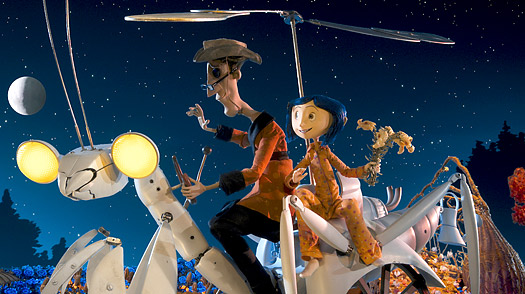
It seems at first there is a contradiction in the story: the mice warn Coraline against going through the tunnel, but they are the ones who lead her through it. However, we learn, thanks to the Cat, that the Other Side mice are actually rats in disguise. The mice call Coraline by her real name, while the humans all too often mistakenly "correct" the name to the more common "Caroline." (Coraline, suggesting coral, something precious deeply hidden, is etymologically preferable to Caroline--a feminine form of Charles, itself derived from Karl, peasant.)
The film is disappointing in its presentation of the two scenes in which the three ghost children appear, scenes which in the book are very skillfully given, employing touch as well as sight and hearing to convey the uncanny. After Coraline has been shut into the blackness of the closet by the Beldam, and exerts herself to control her fear, she feels a cold face brushing against her own; she hears voices so soft they are next to imaginary; she sees figures so faint they might have been afterimages. The chill of fear gradually turns to compassion for these devastated beings. The language of two of them calls up long-past (Victorian, Elizabethan) times; their hollowness, forgetfulness even of their names, conveys the sinister power of the Beldam, who has sucked them dry and almost forgotten them. Virtually none of this emotional power can be conveyed by the medium of stop-action puppets.
The same is true of the wonderful scene near the end of the book, in which the dreaming Coraline and the three rescued spirit-children have a picnic party, including a magnificent romp, in a paradisal--or Narnian--meadow. It closes when the three children must cross a stream into uncharted lands. The still-living Coraline cannot follow them, but must return to the physical world. This beautiful and spiritually resonant picture, like something from a Near-Death experience, might have been hard to present successfully with puppets (though not as difficult as the closet scene). The filmmakers do not try; instead, there is a lively garden party put on by Coraline's real parents, who have now actually been digging in the soil and planting real tulips. The three rescued spirits, turned to gold, put in a brief appearance, but there is virtually nothing numinous left.
We do not recommend this book or movie for small children, or for particularly sensitive older children. We do recommend it (the film) for everybody else, especially for people who enjoy finely-crafted stop-motion animation, particularly in 3D. Those who like to trace skillfully wrought symbol patterns and Shakespearean themes will also find both book and film very rewarding.
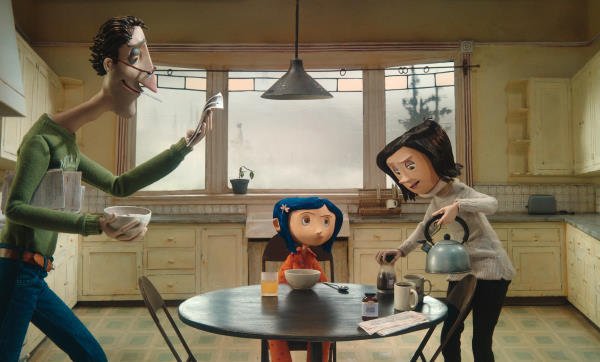
It is uncertain whether the film will speak to the condition of those who are still undecided between a vegan diet and a violence-based diet. It is the latter kind the Unmother provides--a huge chicken, gravy, omelette, bacon, frankfurters---in short, fare unmistakably derived from victimized animals. Coraline's real father prepares vegan meals in the film (not in the book, unfortunately). The witch's conspicuously flesh-heavy feasts are rightly disturbing. Regrettably, however, the vegan meals that Coraline's real father prepares in the film are unappetizing, which might tend to reinforce typical views of vegan diets as tasteless. However, at least it is clear that the vegan meals belong in the realm of the real and the good, while the flesh-meals are part of the witch's candy-house lure into the realm of evil.
The main gift of the story to animal defenders is the figure of the Black Cat, traditionally a sinister image linked to female evil, but now become strong and caring, and companioned with female resourcefulness and heroism. It is rats who here are associated with evil, unfortunately for actual rats, who have been treated with contempt and revulsion for too long. The mice come off much better; they are appealing beings with intuitive and artistic potentials.
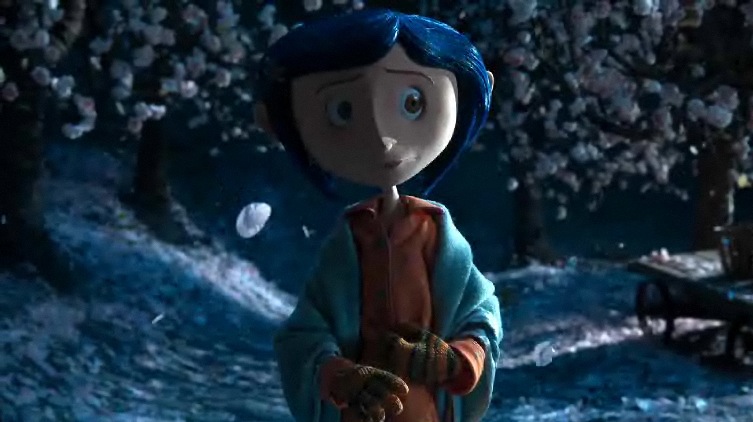
Except for its limitations in presenting the ghosts, the medium of stop-action puppets is well chosen for the film, considering that the story is that of a child. The manipulated puppets reinforce the powerfully suggestive central symbol of buttoned eyes for the beings in the Beldam's world; furthermore, as the story darkens toward the climax, the moon is slowly eclipsed by a button-shadow. Allowing one's eyes to be buttoned to satisfy greed for questionable pleasures is to become a rag-doll, choosing blindness and eclipse to inconvenient realities. It is a form of signing away part of one's soul in a compact with the demonic. Though the author and producers of Coraline do not consciously use this symbol to represent a choice to participate in the victimization of animals, now that the author and filmmakers have given powerful expression to this symbol, including allusions to eating flesh, we can gratefully make use of it.
The story also illuminates the work of greedy demonic powers fostering ecological breakdown, as suggested by the film scenes in which Coraline finds the witch's garden plants becoming malevolent. Furthermore, in both book and film, as the girl walks beyond the garden, the landscape becomes first sketchy, then empty--Nature, considered of no value, has vanished.
Both the book and the film are deeply resonant artistic achievements, for which we can be grateful.
-Benjamin Urrutia and Gracia Fay Ellwood
Recipes
Bohemian Style Pasta Sauce
Makes about 4 cups sauce
3 large ripe tomatoes, peeled and coarsely chopped
2 large eggplants, peeled and cubed
1 large red bell pepper, cubed
1 large clove garlic, finely chopped
3 T. extra virgin olive oil
sea salt, to taste
freshly ground black pepper, to taste
¼ cup vegan Parmesan, plus additional for garnishing
In a large heavy skillet, combine tomatoes, eggplant and red peppers; cook uncovered over medium heat until liquid has completely evaporated. Mash mixture with fork from time to time. Cooking time should take about 10-15 minutes. Add garlic, olive oil, sea salt, and black pepper; continue cooking until thickened, about 20 minutes. Sprinkle with vegan Parmesan; toss with pasta and sprinkle with additional vegan Parmesan as desired.
Broiled zucchini is an excellent accompaniment to this dish.
--- Angela Suarez
Potato-Cauliflower Soup
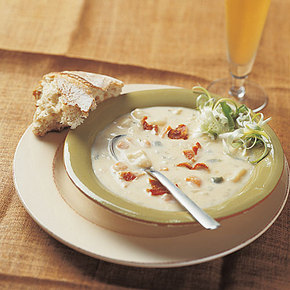 1/2 cauliflower, cut up
1/2 cauliflower, cut up
1 medium potato, peeled and cut up
1 carrot, cut up
1/2 onion, chopped
1 cup soy milk
1 cup plus 2 T. rice milk
3/4 tsp. salt
1/4 tsp. pepper
1 spear broccoli (without stem), cut small
1/4 red bell pepper, chopped
"Follow Your Heart" vegan cheddar cheeze, grated, to taste or as garnish
Parsley to garnish, dried or chopped fresh
Steam cauliflower, potatoes, carrot, and onion. Heat soy milk and rice milk with salt and pepper. When steamed veggies are cooked, put half of them in blender with half of milk mixture; blend; then do the rest. Return soup to pot; add the broccoli pieces. Simmer for three minutes, which should cook the broccoli sufficiently. Remove from heat. Add the chopped bell pepper. You may either add the cheeze at this point, stirring in, or add as garnish to each plate. Garnish with parsley.
The cheeze is high in fat, but otherwise this is a low-fat soup, though it tastes rich and creamy.
--Modified from an original by Ruanne Peters in A Feast of Friendship: A Sanctuary Cookbook produced by Orange Grove Meeting in 1987.
My Pilgrimage: Jennifer Chaky
What’s This Vegan Thing All About?
An Animal Like Me
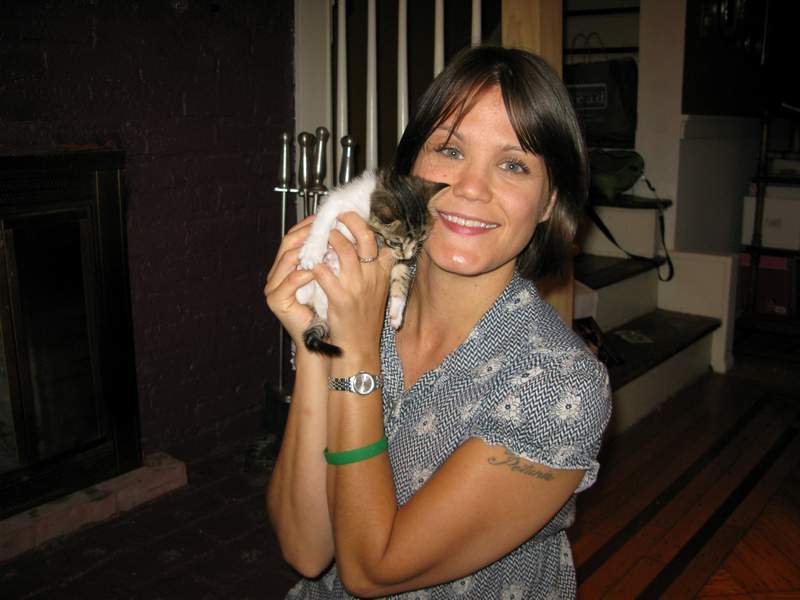 When I was fifteen, I thought hard about the ways that all animals, including humans, have similar physiology: two eyes, leg and arm appendages, veins, skin, blood, bones, even the same organs. This was the first time I decided that to eat an animal or a by-product is just gross. Might as well just take human tissue, grind it, make a patty, and grill it. Same thing.
When I was fifteen, I thought hard about the ways that all animals, including humans, have similar physiology: two eyes, leg and arm appendages, veins, skin, blood, bones, even the same organs. This was the first time I decided that to eat an animal or a by-product is just gross. Might as well just take human tissue, grind it, make a patty, and grill it. Same thing.
But then I would get hungry, and the stomach trumps the mind at times like that. And I didn't know what else to eat besides milk and cereal for breakfast, roast beef sandwich for lunch, and chicken for dinner.
But then I began thinking about my dog, Tuna. Supposedly, I am more important than she and my needs come first because she is an animal and I am a human. But just because her agenda is to find a patch of sun to lie in and mine is to go to school and get a job and earn money does not mean that my needs are superior to hers. To think that they are would be applying my human values to her, and deciding that just because this lowly animal doesn't value the same things I do then I can decide what I'd like to do with her. And if she is tasty, why then, I could just kill her and eat her.
But this didn't sit right with me, of course. I know my dog as an individual, and love her. I couldn't eat her. But why should this animal be lucky? Maybe they all have a right to their lives, whether I relate to them or not. I don't know other people's dogs, but I still believe in their right to live. Why not any animal--cow, pig, chicken, sheep, goat? Are they below dogs? According to whose standards? Does a dull-minded person have less of a right to life than a smart person?
Human and Planetary Health
So I decided that eating animals and their by-products was gross, and now I had this philosophical argument as backup for when I got really hungry  and didn't care. It has taken me many years to change my eating and shopping habits, and to this day, twenty years later, I am still learning. Luckily my journey has not been propelled by philosophical ponderings alone. It turns out that I am much healthier for not eating animal protein, as I have also avoided the many hormones, chemicals, and saturated fats that go along with these "foods." And I am a staunch environmentalist; it turns out that animal agriculture accounts for more environmental degradation than any other industry. By not being a consumer of animal products, I am doing more for the environment than if I gave up my car!
and didn't care. It has taken me many years to change my eating and shopping habits, and to this day, twenty years later, I am still learning. Luckily my journey has not been propelled by philosophical ponderings alone. It turns out that I am much healthier for not eating animal protein, as I have also avoided the many hormones, chemicals, and saturated fats that go along with these "foods." And I am a staunch environmentalist; it turns out that animal agriculture accounts for more environmental degradation than any other industry. By not being a consumer of animal products, I am doing more for the environment than if I gave up my car!
Each a Unique Personality
So now I had four reasons to continue to be vegan, and still sometimes it has been hard when everyone around me is eating meat, eggs, and dairy. But hard as it may have been, the reasons to stay the course kept coming like signs in the road that I was indeed on the right track. I have now come to know many individual farm animals whose lives I vowed to not exploit, even prior to knowing what amazing animals they truly are. Each certainly has their own unique personality, just like dogs and cats. I've met cows who have scaled 6-foot walls, minutes away from the killing floor where they have seen, smelled, and heard others before them fall. Cows are not supposed to be able to jump that high! Some have escaped Halal markets in New York City and ran for their lives through the streets, not knowing where they were going, but for darn sure knowing where they didn't want to be.
I've met a cow who was terribly traumatized after all her years spent in the dairy industry, where she gave birth to baby after baby and never was allowed to keep one of them because her milk was stolen by humans--as were her babies. She watched her newborns being dragged away minutes after birth, before they could suckle, before they could even stand. Instead of being licked clean by their mother's warm tongue, they were hosed off with harsh cold water and forced into a pen or truck for their fate as a future dairy cow or chunks of veal. Their mother was left with her anguish, her natural passion to nurture, and nothing but an unnatural machine to feed. After she was no longer useful to the dairy industry she was sent to slaughter. But she decided she had enough. She escaped and was rescued by a sanctuary where she confines herself to a pen that she is afraid to leave. She is nervous when anyone else tries to approach, but she allows one person to go near her, one of her rescuers. After all she has been through, it is impressive that she is able to recognize this one person as an individual, one who cares. Why couldn't all the others before have done so?
When I visit these animals at the sanctuaries where they are so blessed to be, I always think of the ones before them in that line at the slaughterhouse who were not able to escape. Or other animals who were so maltreated and weak , they never made it that far. There is nothing I can do for those animals except to say to them, " Your life was not ended for me. Anytime I eat, I am not harming you and I never will." That's the only thing that gives me some peace. That is why I am a vegan.
Vegan Elitism?
Some say veganism is a western privilege--that because we have the luxury of choice, we can actually choose to not eat an entire category of food--as though our choice is essentially snobbery. To this I can retort: eating quantities of meat can also be said to be a western privilege--one that most Americans are so gluttonously taking advantage of. But I don't see the point in arguing if veganism is a privilege or not. This is my culture, and this is what I know. I can only try and effect change around me, and I only offer my opinions; I never force them. We are a in a country of abundance of resources and choices, and of course I am grateful to be able to make the choice of veganism. I am also grateful my family does not own slaves, and that my mother is not forced to be subservient to my father. I am glad that in this country we have battled against racism and sexism, and made progress. And I am glad there is a large movement to squelch the next big 'ism"--Speciesism --where humans take dominance over every other living thing. I think western privilege can be an example to the rest of the world: no, they don't have to live like us, but the goal of a society can be to have equal rights for all, and to get to a place where we can think beyond ourselves and recognize the rights of others, no matter what their race, gender, or species, to live without oppression, torture, and fear.
We Vegans Deserve Equal Say
Now one final note for those who are not fans of sometimes-outspoken groups like PETA: I think many people feel that animal rights activists are trying to shove their beliefs down everyone's throat. But may I offer this perspective: It is only fair. Vegans endure countless messages promoting things that they deplore: Beef commercials; "Got milk?" billboard ads; sides of trucks plastered with images of poultry . . . the barrage is endless and everywhere. If animal rights groups had the money and political power that the animal industry does, then we'd be seeing more commercials and ads to combat these messages that animal exploitation is normal. If the dairy industry is allowed to tell a lie that milk does a body good, then why can't animal rights activists tell the truth--that it is not necessary, or even healthy, for humans to to go from their mother's breast milk to an animal's breast milk? Not everyone will agree what the truth is, but at least the public would hear from both sides equally. And then maybe, instead of vegans being perceived as extreme, we will be seen as normal. Maybe the reasons for our choices will be more understood and even accepted.
Jennifer Chaky is a freelance copyeditor and the owner of Go Lightly (www.golightlystore.com), an eco-store in Montclair, NJ where you can find things like bowls made from vinyl records. She lives with her vegan daughter, and their adopted family of various critters. They like to visit their friends at Maple Farms Sanctuary www.maplefarmsanctuary.org, and Woodstock Farm Animal Sanctuary www.woodstockfas.org.
Pioneer: Stephen of Mar Saba (ca. 710-784 C.E.)
Stephen was a native of Palestine when the Holy Land was still home to many Christians, though under Muslim rule. He was a nephew of St. John Damascene, a noted theologian who had begun his career as a tax official for the caliph, but who later became a monk and brought the ten-year-old Stephen as his protege with him to his monastery of Mar (Saint) Saba. This sacred site, still a monastery today, is in a wild desert-like area not far from the city of Gaza.

The monastery became his home. After serving in various monastic capacities, including guest-master, Stephen requested permission to practice contemplation as a hermit. The answer was yes and no; he could maintain silence five days a week, but on Saturday and Sunday had to make himself available to give spiritual counsel to visitors. He was also ordained priest. It is reported that once when he was celebrating the Eucharist in his monastic cell, as he said the words in the Eastern liturgy, "Holy things to the Holy," a brilliant light emanated from him; and that from then on, prayers he uttered during the Eucharistic rite were inevitably granted. Reportedly a leper was healed as a result of his intercessory prayer.
His holiness extended to his relationship with all life. His biographer, Leontius, wrote of him that, "Whatever help, spiritual or material he was asked to give, he gave. He possessed nothing and lacked nothing. In total poverty, he possessed all things." The saint's generosity was poured out to animal as well as human brothers and sisters. Indeed, he had a special love for animals, feeding doves, starlings, and deer out of his hand, even gathering up worms on the ground to places where they would be safe from trampling feet. Birds alighted on his shoulder, knowing that here was a friend who would do them no harm. He said, "Do you not realize that if a person acts without compassion toward irrational nature, he will do the same toward his neighbor?" This is a truth that has been demonstrated over and over in our own time as well as his, but has yet fully to sink in.
Sadly, the end of his life seems to have been overshadowed by the violence which was so contrary to his own nature. Gaza, troubled then as now, was raided by Saracens who martyred many monks and others, including one fellow-monk especially beloved of Stephen. This martyr's crown of glory was seen in advance in a vision by the saint. Stephen himself, however, seems to have died peacefully, loved by all, but especially by animals and by those humans who are lovers of animals.
--Robert Ellwood
Poetry: Abu Hamid al-Ghazali (1058-1111)
Jesus
My feet are my mount,
My homes are Earth's caves,
My food is her plants,
My drink is her streams.
What riches are greater than these,
O children of Israel?
I go to bed with nothing,
I arise without anything,
Yet there is no one richer than I am.
-Adapted by Benjamin Urrutia
According to Keith Akers in The Lost Religion of Jesus, al-Ghazali, a Sufi mystic, was not a vegetarian himself, a fact which suggests that the view of Jesus as a vegan was an an idea he inherited rather than one he invented.
The Peaceable Table is
a project of the Animal Kinship Committee of Orange Grove Friends Meeting, Pasadena, California. It is intended to resume the witness of that excellent vehicle of the Friends
Vegetarian Society of North America, The Friendly
Vegetarian, which appeared quarterly between 1982 and
1995. Following its example, and sometimes borrowing from its
treasures, we publish articles for toe-in-the-water
vegetarians as well as long-term ones, news notes, poetry, letters, book
and film reviews, and recipes.
The journal is intended to be
interactive; contributions, including illustrations, are
invited for the next issue. Deadline for the May issue
will be April 29, 2009. Send to graciafay@gmail.com
or 10 Krotona Hill, Ojai, CA 93023. We operate primarily
online in order to conserve trees and labor, but hard copy
is available for interested persons who are not online.
The latter are asked, if their funds permit, to donate $12 (USD) per year. Other
donations to offset the cost of the domain name and server are welcome.
Website: www.vegetarianfriends.net
Editor: Gracia Fay Ellwood
Book and Film Reviewers: Benjamin Urrutia & Robert Ellwood
Recipe Editor: Angela Suarez
NewsNotes Editors: Lorena Mucke and Marian Hussenbux
Technical Architect: Richard Scott Lancelot Ellwood

 them something of the others' frame of mind. Consciousness researcher and educator James W. Peterson, in his book The Secret Life of Kids, tells of having encountered this phenomenon during his college years when he was employed as a summer camp counselor. One day when he was sitting in meditation during his free hour, two boys named Drew and Eric, eight and nine, came running in. Not wanting to lose any of his precious meditation time, Peterson kept his eyes closed and tried to continue. The boys slowed and one began to whisper: "Do you see what I see?" The other replied "Yeah, it's weird." They began to describe to each other what they saw: swatches of color, constantly changing in shade, floating around different areas of Peterson's body. Later, Peterson recorded Drew's account of what he saw in more detail. Neither of the children had told an adult about their perceptions before, apparently sensing that such talk would not be welcome.
them something of the others' frame of mind. Consciousness researcher and educator James W. Peterson, in his book The Secret Life of Kids, tells of having encountered this phenomenon during his college years when he was employed as a summer camp counselor. One day when he was sitting in meditation during his free hour, two boys named Drew and Eric, eight and nine, came running in. Not wanting to lose any of his precious meditation time, Peterson kept his eyes closed and tried to continue. The boys slowed and one began to whisper: "Do you see what I see?" The other replied "Yeah, it's weird." They began to describe to each other what they saw: swatches of color, constantly changing in shade, floating around different areas of Peterson's body. Later, Peterson recorded Drew's account of what he saw in more detail. Neither of the children had told an adult about their perceptions before, apparently sensing that such talk would not be welcome.  In fifteen years of research, Peterson determined that about seven per cent of children see such colored light around humans, and sometimes around animals and plants as well. Most children saw the colors only occasionally, e.g., around a person in emotionally charged states; a few saw them all the time. Overall, what they saw fit into definite patterns. Beautiful, clear colors generally went with good feelings. Black, gray, or similar muddy shades indicated negative feelings--depression, fear, despair; red tended to mean anger, though it could sometimes be positive. When Peterson was upset trying to cope with classroom disorder, eight-year-old Quinton liked to pipe up and tell him that he had red and gray colors coming out of his head, or nasty lightning bolts around his eyes. (Since Peterson was trying to cultivate spiritual qualities in life, Quinton's candor was not appreciated.) In contrast, when a singer led the class in a song about love and joy , two or three children individually later reported shimmering yellow-green light around or flowing upward out of his head. However, the children do not interpret all the colors they see, which in any case are always moving and changing.
In fifteen years of research, Peterson determined that about seven per cent of children see such colored light around humans, and sometimes around animals and plants as well. Most children saw the colors only occasionally, e.g., around a person in emotionally charged states; a few saw them all the time. Overall, what they saw fit into definite patterns. Beautiful, clear colors generally went with good feelings. Black, gray, or similar muddy shades indicated negative feelings--depression, fear, despair; red tended to mean anger, though it could sometimes be positive. When Peterson was upset trying to cope with classroom disorder, eight-year-old Quinton liked to pipe up and tell him that he had red and gray colors coming out of his head, or nasty lightning bolts around his eyes. (Since Peterson was trying to cultivate spiritual qualities in life, Quinton's candor was not appreciated.) In contrast, when a singer led the class in a song about love and joy , two or three children individually later reported shimmering yellow-green light around or flowing upward out of his head. However, the children do not interpret all the colors they see, which in any case are always moving and changing.  Leadbeater described such separated shapes in considerable detail in a book entitled Thought-Forms, co-written with Annie Wood Besant (a Pioneer featured in PT9 ). He would see them forming in a person's aura, then separating and moving outward. For example, a strong thought of love, peace, and protection, sent out by a caring person who had "earned the right to bless," took a beautiful golden and pink winged shape that went forth to its beloved object, over whom it would probably have a beneficial effect. On the other side, Leadbeater also described forms similar to what Stacy saw. The figure reproduced here is an artist's depiction of what Leadbeater saw when someone suddenly exploded with irritation. More frighteningly, in a slum area of London he saw a muddy gray-brown cloud out of which erupted a dirty-red lightning bolt, the whole shooting out of a partly intoxicated man toward a woman just before he struck her down. Morihei Ueshiba, the founder of aikido, during the Japanese assault on China in 1931 similarly saw a stream of ki/light coming from a gun just before someone fired at him. This perception actually enabled him to dodge the bullets.
Leadbeater described such separated shapes in considerable detail in a book entitled Thought-Forms, co-written with Annie Wood Besant (a Pioneer featured in PT9 ). He would see them forming in a person's aura, then separating and moving outward. For example, a strong thought of love, peace, and protection, sent out by a caring person who had "earned the right to bless," took a beautiful golden and pink winged shape that went forth to its beloved object, over whom it would probably have a beneficial effect. On the other side, Leadbeater also described forms similar to what Stacy saw. The figure reproduced here is an artist's depiction of what Leadbeater saw when someone suddenly exploded with irritation. More frighteningly, in a slum area of London he saw a muddy gray-brown cloud out of which erupted a dirty-red lightning bolt, the whole shooting out of a partly intoxicated man toward a woman just before he struck her down. Morihei Ueshiba, the founder of aikido, during the Japanese assault on China in 1931 similarly saw a stream of ki/light coming from a gun just before someone fired at him. This perception actually enabled him to dodge the bullets.  What different visionaries see is not always consistent. Leadbeater and his colleague Besant (who was also somewhat clairvoyant) apparently saw auras completely surrounding persons, and would see the same colors in a given person's aura. Peterson's child visionaries also sometimes saw the same colors at the same time. There is no doubt that certain patterns do recur among visionaries independently of one another--rose tends to mean affection, muddy colors negative feelings--but there is also unconscious creativity involved in what different visionaries see. For example, one of Peterson's children, seven-year-old Jessie, saw colored light only from parts of a person's body: white light from their fingers, and colored light from their heads. There are also differences regarding which color represents a given feeling. For example, Leadbeater perceived the devotional feelings of many people joined in a worship service as a mass of blue light, whereas for another clairvoyant the typical color emitted by people in worship might be golden or white. Overall, however, there is little doubt that such perceptions are not psychotic aberrations any more than were George Fox's vision of an ocean of love and light that flowed over an ocean of darkness and death. What these gifted persons see evidently has a basis in reality.
What different visionaries see is not always consistent. Leadbeater and his colleague Besant (who was also somewhat clairvoyant) apparently saw auras completely surrounding persons, and would see the same colors in a given person's aura. Peterson's child visionaries also sometimes saw the same colors at the same time. There is no doubt that certain patterns do recur among visionaries independently of one another--rose tends to mean affection, muddy colors negative feelings--but there is also unconscious creativity involved in what different visionaries see. For example, one of Peterson's children, seven-year-old Jessie, saw colored light only from parts of a person's body: white light from their fingers, and colored light from their heads. There are also differences regarding which color represents a given feeling. For example, Leadbeater perceived the devotional feelings of many people joined in a worship service as a mass of blue light, whereas for another clairvoyant the typical color emitted by people in worship might be golden or white. Overall, however, there is little doubt that such perceptions are not psychotic aberrations any more than were George Fox's vision of an ocean of love and light that flowed over an ocean of darkness and death. What these gifted persons see evidently has a basis in reality. 

 A Quaker parrot named Willie, residing in the home of guardian Megan Howard in Denver, Colorado, has been named a hero and awarded the Animal Lifesaver Award by the local Red Cross chapter. Megan was babysitting little Hanna Kuusk, to whom she had given breakfast, then stepped out of the room.
A Quaker parrot named Willie, residing in the home of guardian Megan Howard in Denver, Colorado, has been named a hero and awarded the Animal Lifesaver Award by the local Red Cross chapter. Megan was babysitting little Hanna Kuusk, to whom she had given breakfast, then stepped out of the room.  A bipartisan caucus has been created to raise awareness about animals and press for legislation to protect them. It will be co-chaired by Republican Elton Gallegly from southern California (recipient of a Lifetime Award from the HSUS), and Democrat Jim Moran of Virginia, both of whom have a history of work on animal welfare issues. In the past they pushed through laws such as those forbidding the dreadful "animal crush" videos (a form of pornography) of the 1990s, and the interstate transport of dogs and cocks for fighting. The group will work on such issues as ending horse-slaughter plants, export of horses for slaughter, and puppy mills. Photo of Elton Gallegly
A bipartisan caucus has been created to raise awareness about animals and press for legislation to protect them. It will be co-chaired by Republican Elton Gallegly from southern California (recipient of a Lifetime Award from the HSUS), and Democrat Jim Moran of Virginia, both of whom have a history of work on animal welfare issues. In the past they pushed through laws such as those forbidding the dreadful "animal crush" videos (a form of pornography) of the 1990s, and the interstate transport of dogs and cocks for fighting. The group will work on such issues as ending horse-slaughter plants, export of horses for slaughter, and puppy mills. Photo of Elton Gallegly  Gaiman, Neil. Coraline. Illustrations by Dave McKean. New York: HarperCollins, 2002. 162 pages paperback. $12.99.
Gaiman, Neil. Coraline. Illustrations by Dave McKean. New York: HarperCollins, 2002. 162 pages paperback. $12.99.  A Jumping Mouse leads Coraline--like Alice through the Rabbit Hole or Lucy through the wardrobe--to a door which the previous day led only to a bricked-off part of the house. Now, however, it opens into a tunnel leading to a strange and dangerous world which mimics her own. Here Coraline meets the Other Mother, who almost exactly resembles her own parent. This being has buttons for eyes, like the rag doll, but seems otherwise to be somebody fun to know. She gives the girl the smiles and attention she cannot get from her real parents, who are too busy writing a gardening catalog (thought they don't do any actual gardening). She provides entertaining and tasty meals, about which more later. Her version of the house is new-looking and brightly painted, has a magical garden of live flowers, and theatrical neighbors (resembling those in the real world, but button-eyed) in adjoining apartments who provide entertaining shows. After a couple of nights of this, Coraline feels she is ready to stay in such a wonderland. But there is a catch: She must allow her eyes to be covered (or replaced) by buttons. Presented with this requirement, the honest Coraline wants only to escape; but it becomes clear that escape will not be easy.
A Jumping Mouse leads Coraline--like Alice through the Rabbit Hole or Lucy through the wardrobe--to a door which the previous day led only to a bricked-off part of the house. Now, however, it opens into a tunnel leading to a strange and dangerous world which mimics her own. Here Coraline meets the Other Mother, who almost exactly resembles her own parent. This being has buttons for eyes, like the rag doll, but seems otherwise to be somebody fun to know. She gives the girl the smiles and attention she cannot get from her real parents, who are too busy writing a gardening catalog (thought they don't do any actual gardening). She provides entertaining and tasty meals, about which more later. Her version of the house is new-looking and brightly painted, has a magical garden of live flowers, and theatrical neighbors (resembling those in the real world, but button-eyed) in adjoining apartments who provide entertaining shows. After a couple of nights of this, Coraline feels she is ready to stay in such a wonderland. But there is a catch: She must allow her eyes to be covered (or replaced) by buttons. Presented with this requirement, the honest Coraline wants only to escape; but it becomes clear that escape will not be easy. Coraline gets out of the Beldam's false world, but then finds that her parents have disappeared, apparently stolen away by the witch to lure her back. She gathers her courage and returns, both to rescue them and to find the stolen souls of the three ghost children. She has a powerful talisman, a stone with a hole in it, given to her by the (real) retired actresses in the downstairs apartment, a stone which will prove invaluable in her search.
Coraline gets out of the Beldam's false world, but then finds that her parents have disappeared, apparently stolen away by the witch to lure her back. She gathers her courage and returns, both to rescue them and to find the stolen souls of the three ghost children. She has a powerful talisman, a stone with a hole in it, given to her by the (real) retired actresses in the downstairs apartment, a stone which will prove invaluable in her search.


 1/2 cauliflower, cut up
1/2 cauliflower, cut up When I was fifteen, I thought hard about the ways that all animals, including humans, have similar physiology: two eyes, leg and arm appendages, veins, skin, blood, bones, even the same organs. This was the first time I decided that to eat an animal or a by-product is just gross. Might as well just take human tissue, grind it, make a patty, and grill it. Same thing.
When I was fifteen, I thought hard about the ways that all animals, including humans, have similar physiology: two eyes, leg and arm appendages, veins, skin, blood, bones, even the same organs. This was the first time I decided that to eat an animal or a by-product is just gross. Might as well just take human tissue, grind it, make a patty, and grill it. Same thing.  and didn't care. It has taken me many years to change my eating and shopping habits, and to this day, twenty years later, I am still learning. Luckily my journey has not been propelled by philosophical ponderings alone. It turns out that I am much healthier for not eating animal protein, as I have also avoided the many hormones, chemicals, and saturated fats that go along with these "foods." And I am a staunch environmentalist; it turns out that animal agriculture accounts for more environmental degradation than any other industry. By not being a consumer of animal products, I am doing more for the environment than if I gave up my car!
and didn't care. It has taken me many years to change my eating and shopping habits, and to this day, twenty years later, I am still learning. Luckily my journey has not been propelled by philosophical ponderings alone. It turns out that I am much healthier for not eating animal protein, as I have also avoided the many hormones, chemicals, and saturated fats that go along with these "foods." And I am a staunch environmentalist; it turns out that animal agriculture accounts for more environmental degradation than any other industry. By not being a consumer of animal products, I am doing more for the environment than if I gave up my car! 